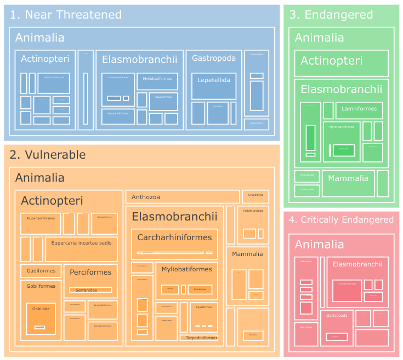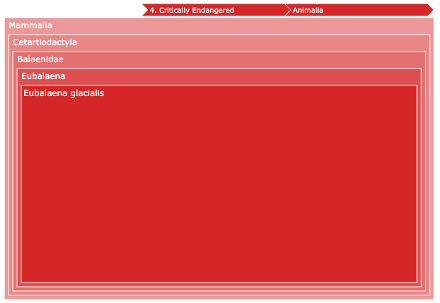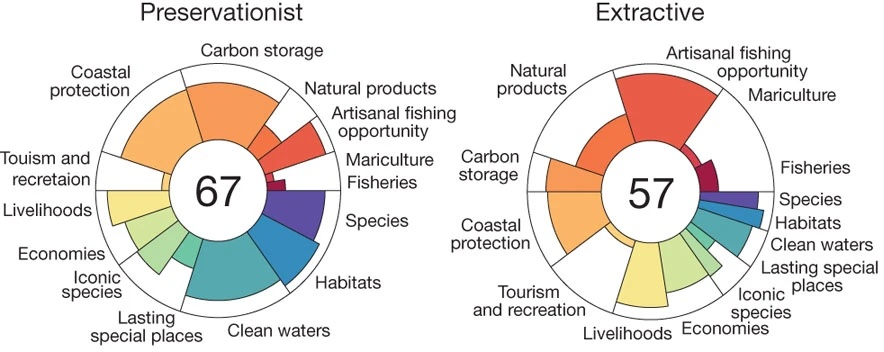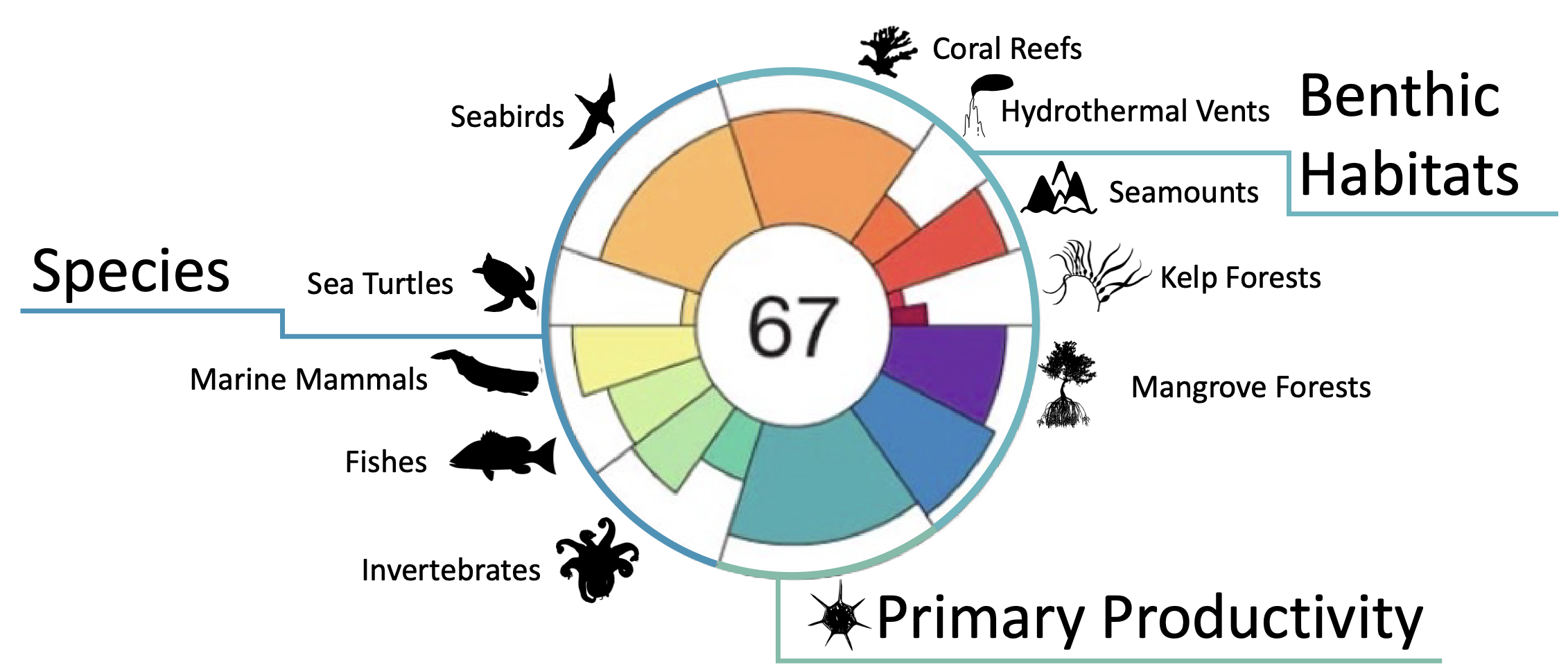6 Scoring
6.1 Visualization
We are in process with sorting the scoring methodology informed by visualization approaches.
6.1.1 Treemap

- Audience: scientists
- Show contribution of each element to a given pixel or area of interest
- Elements can be hierarchical across Sensitivity metrics and/or taxonomy
- Interactively zoom, e.g.: 4. Critically Endangered > Animalia > Mammalia

6.1.2 Flower Plot
Petal Length
“One question was about the meaning of the numbers on the pedal plot. I explained that a higher sensitivity score indicates an area that could be susceptible to minor perturbations, while a lower score suggests an area that is more robust to minor changes.” - TWOHI
In the original Ocean Health Index (Halpern et al. 2012), the length of the petal reflected the percent towards maximum sustainability of the given goal. The framework is also based on a reference point, either spatially or temporally (Samhouri et al. 2012).
RESA ’25
It makes sense to make the most vulnerable the highest score, so a low score is preferable (versus a preferred high score for sustainability of an OHI goal). We’ll need to determine what the “highest” score means as a reference point and consider SMART criteria. (Specific, Measurable, Assignable, Realistic, Time-related). Will the reference point be the same globally or vary based on some regional maximum?
Petal Width (and possiblyvarying weights)
“Another question was about how we manage the weights. I mentioned that we are not currently applying weights, but someone seemed concerned about it. We can discuss this further if needed.” - TWOHI
For the OHI flower plot, the width of the petal represents its weight contributing to the weighted average score in the center of the flower. The varying importance of each goal is based on societally held values with potentially different value sets, such as preservationist vs extractive:

RESA ’25
For the RESA ’25, when looking at Species, Habitats and Primary Productivity, how shall they be weighted to factor into a final score? Shall species groups be simply weighted based on the number of species within, total biomass, extinction risk, commercial value, etc? And then Species versus less numerous Benthic Habitats and a singular value for Primary Productivity? I will conduct a literature survey to assign sensible value sets, but an App could also apply a user-defined value set to assign weights. That gets messy, but if transparent and easy ideally would lead to scientific consensus with a workshop and/or survey.
